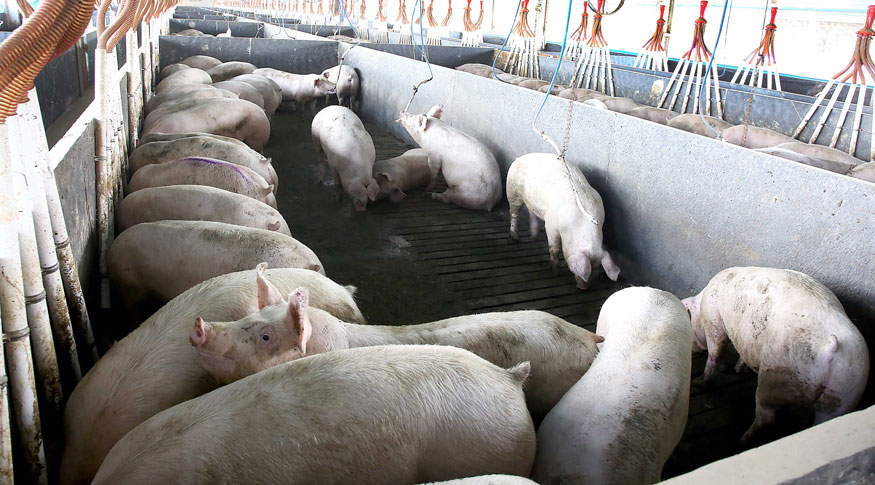Livestock production
Slaughter of hogs and pigs in Q2 is highest in the time series
September 10, 2021 09h00 AM | Last Updated: September 11, 2021 02h07 AM

A total of 13.04 million hogs and pigs were slaughtered in Q2 2021 in Brazil, a record figure in the time series that started in 1997. This figure represents an increase of 7.6% in relation to the same period in 2020 and an increse of 2.9% in comparison with Q1 2021. The result is part of the Livestock Production statistics, released today (10) by the IBGE. The survey also shows that 1.52 billion chickens were slaughtered. That means this is the best second quarter in the time series and represents an increase of 7.8% in relation to the same period in 2020, but a decrease of 3% against Q1 2021.
As for cattle, a total of 7.08 million head were slaughtered, lowest figure for a second quarter since 2011 and 4.4% below the figure in Q2 2020, which is yet 7.4% above the result of Q1 2021.
According to Bernardo Viscardi, manager of the survey, the record result of beef exports, with the exports peak in June, helped form this scenario. “Domestic consumption was also important, since the pork is cheaper than beef for consumers,” the analyst adds.
Cattle slaughter kept the trend that started in 2020, with retention of heifers due to the high price of calves. Despite retrogression in slaughter, the volume of beef exported was the second biggest in a quarter 2, according to the Secretariat of Foreign Trade, of the Ministry of the Economy (SECEX/ME), with a record result for a month of April (125.50 thousand tonnes).
Exports also influenced figures of chicken slaughter, the best since the third quarter of 2018. “Together with significant liquidity in the domestic market, this fact added to the rise of meat prices and to prices of live animals,” Mr. Viscardi says.
In the off-season period, acquisition of milk decreases; production of eggs hits a record for a Q2
Acquisition of raw milk amounted to 5.82 billion liters in Q2 2021. That figure is equivalent to a drop of 1% in relation to Q2 2020 and a decrease of 11.4% in comparison with the previous quarter.
Mr. Viscardi recalls that the sector has a cyclical behavior, since second quarters of a year ususally have smaller output due to the dry weather. “This year, the drought was more intense in many producing states, mainly in the South and Central West, which affects pastures, usually used as to feed cattle. And the price of inputs for cattle feed, necessary supplements in such conditions, also got higher,” the analyst says. Although the price of milk has risen to the final consumer, such a decrease was not at the same level as that of supplements. “It is harder to pass on costs to the final consumer and that surely discourages production.”
The result represents the third biggest obtention of milk in a 2nd quarter, below the results of 2020 (5.87 billion liters) and 2019 (5.86 billion).
Production of hen eggs hit 985.70 million dozens in the second quarter of 2021, with an increase of 0.9% against Q2 2020 and of 0.5% against Q1 2021. As a result, production hit a record for a Q2, being the fourth biggest in the survey time series.
The Quarterly Survey of Leather Production showed that 7.51 million pieces of rawhide were received by tanneries, an increase against Q2 2020 (2.6%) and in comparison with Q1 2021 (6.2%). Despite the increase, acquisition of leather is close to levels of 2003, since, currently, there was a drop in the number of cattle head available for slaughter.
More about the survey
The survey investigates information on the number of slaughtered animals and the total weight of carcasses, by species of cattle (oxen, cows, steers and heifers), hogs and pigs, and chicken, having as collection units establishments that slaughter animals under federal, state or municipal sanitary inspection. The survey is is released every quarter and data are presented month per month for each quarter of the civil year.
As of the first quarter of 2018, in response to users’ needs for timely information on livestock, the IBGE started releasing "First Results" of the Quarterly Survey of Animal Slaughter for Brazil, as a provisional solution. These data are available nearly one month ahead the release of the "Complete Results”. These are available Sidra.database


















